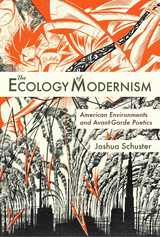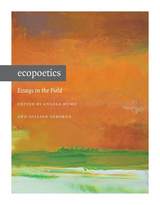People and Plants in Ancient Eastern North America
University of Arizona Press
eISBN: 978-0-8165-0224-0 | Paper: 978-0-8165-2913-1
See other books on: Biological Diversity | Indigenous Studies | Minnis, Paul E. | People | Plants
See other titles from University of Arizona Press
eISBN: 978-0-8165-0224-0 | Paper: 978-0-8165-2913-1
ABOUT THIS BOOK | AUTHOR BIOGRAPHY
ABOUT THIS BOOK
The environmental diversity of North America is astounding—from the circumpolar tundra with few plants more than a few centimeters tall to the lush, semitropical forests of the southeastern United States and Caribbean Basin. No less remarkable is the record of plants usage by the various indigenous people who have been living there for more than twelve millennia. For the vast majority of this time, their livelihood—food, shelter, fuel, and medicine—depended on their knowledge and use of the environment.
The most comprehensive overview in more than half a century about the interconnectedness of prehistoric Native Americans and their botanical world, this book and its forthcoming companion volume, People and Plants in Ancient Western North America, present the latest information on three major topics: the use of native plants, the history of crops and their uses, and how humans affected their environment. In this volume, expert scholars summarize the prehistoric ethnobotany of four regions: the Eastern Woodlands (W. Cowan, K. Gremillion, M. Scarry, B. Smith, and G. Wagner), Northeast (G. Crawford and D. Smith), Plains (M. Adair), and Caribbean (L. Newsom and D. Pearsall).
This volume contributes significantly to our understanding of the lives of prehistoric people as well as the forces that influenced their communities, their ingenuity, and their ecological impact. It also serves as a guide for designing environmentally sustainable lives today.
The most comprehensive overview in more than half a century about the interconnectedness of prehistoric Native Americans and their botanical world, this book and its forthcoming companion volume, People and Plants in Ancient Western North America, present the latest information on three major topics: the use of native plants, the history of crops and their uses, and how humans affected their environment. In this volume, expert scholars summarize the prehistoric ethnobotany of four regions: the Eastern Woodlands (W. Cowan, K. Gremillion, M. Scarry, B. Smith, and G. Wagner), Northeast (G. Crawford and D. Smith), Plains (M. Adair), and Caribbean (L. Newsom and D. Pearsall).
This volume contributes significantly to our understanding of the lives of prehistoric people as well as the forces that influenced their communities, their ingenuity, and their ecological impact. It also serves as a guide for designing environmentally sustainable lives today.
See other books on: Biological Diversity | Indigenous Studies | Minnis, Paul E. | People | Plants
See other titles from University of Arizona Press












